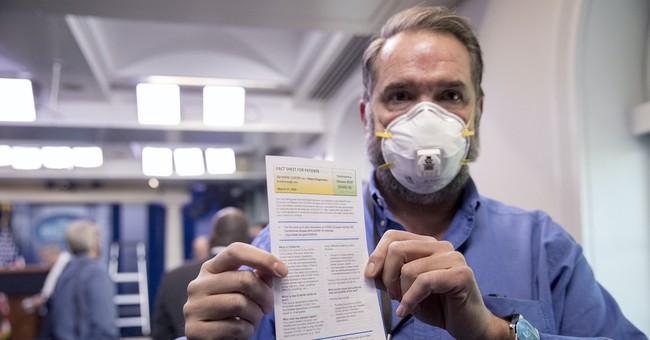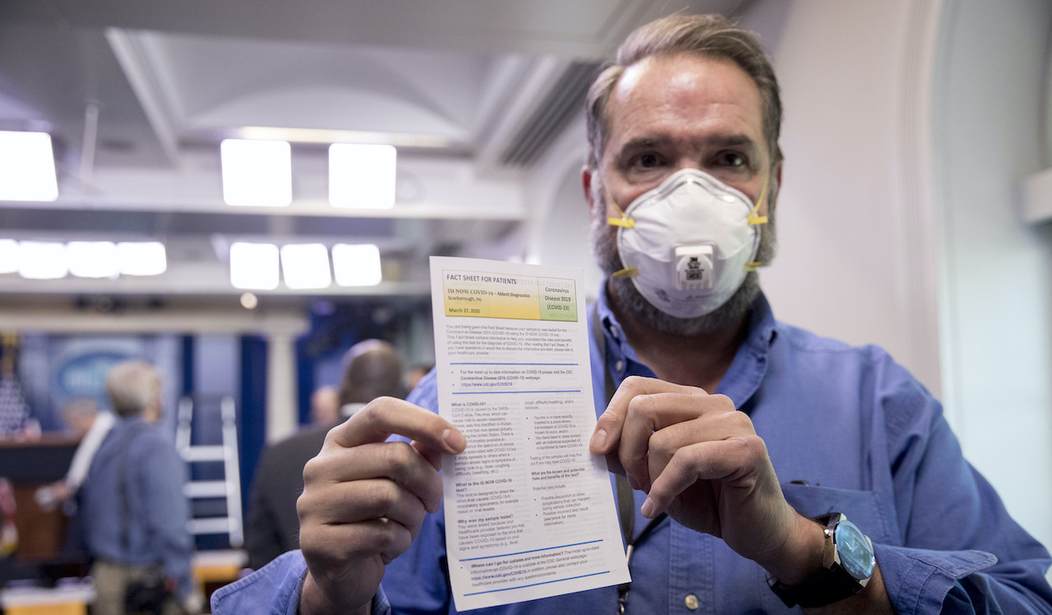
***
“Quantitative PCR is an oxymoron.”
Nobel Prize-winning inventor of PCR, Kary Mullis on why it can’t be used to test for viruses
***
In the previous entry, we learned about The New York Times’ shocking report that the standard PCR tests for COVID-19 everyone’s been rushing out to get are woefully unreliable.
The Times looked at three sets of PCR testing data from Massachusetts, New York, and Nevada and discovered that, because of faulty procedures used at every single testing site in the country, “up to 90 percent of people testing positive carried barely any virus” at all.
The experts they talked to were astonished that such cases are even getting classified as infections.
Yet, for some reason, the Times ran a weak-sauce headline completely downplaying their scandalous discovery: Your Coronavirus Test Is Positive. Maybe It Shouldn’t Be.
But those eye-popping stats exposing the pervasive fraud propping up our regime of mass COVID-19 testing aren’t just absent from the headline. Readers don’t find out about the enormous percentage of faulty diagnoses the Times discovered until their article’s half over!
The opening paragraph briefly states what they found, but only in very general and decidedly less alarming terms:
Some of the nation’s leading public health experts are raising a new concern in the endless debate over coronavirus testing in the United States: The standard tests are diagnosing huge numbers of people who may be carrying relatively insignificant amounts of the virus.
And it’s used as a means to immediately segue into a quite different topic, which the entire first half of the article – aka, the only part anyone’s likely to read – is devoted to:
But researchers say the solution is not to test less, or to skip testing people without symptoms, as recently suggested by the Centers for Disease Control and Prevention. Instead, new data underscore the need for more widespread use of rapid tests…
You may not have heard about those new CDC recommendations to stop testing people without symptoms about which the Times and their anointed experts aren’t thrilled. But their significance can’t possibly be overstated because of a crucial feature of any test that somehow never seems to come up in all the media articles pushing for mass COVID-19 testing: the rate of false positives.
Because any test for COVID-19 will produce a certain percentage of positive diagnoses for patients who don’t, in fact, have the virus, mass testing means that alarming numbers of new COVID-19 cases will keep getting reported every day no matter how few are actually occurring.
The FDA says that one test in use has a false positive rate of 3%. That means that testing a million people a day with it would still result in 30,000 positive diagnoses being reported each day even if the real number of new infections dropped all the way down to zero!
If everyone in America were tested daily as some have proposed, even a .5% false-positive rate would result in over a million and a half new cases being reported daily in the absence of any actual new infections.
The fact that any test is going to have a non-negligible rate of false positives makes mass COVID-19 testing a means for ensuring that a phony pandemic will persist forever even after the real one has run its course.
It may already be happening in Germany.
Recent graphic from @wodarg — the false-positive rate of PCR tests is equal to the COVID-positive rate % in Germany… Infections they're finding are likely false-positives. Why on Earth is this not considered when taking decisions? @FatEmperor in case you missed it. pic.twitter.com/66dK2k2chX
— Nick Pineault (@nickpineault1) August 16, 2020
And in the UK as well.
I read that UK is testing 150,000 people per day
And is getting 1,000 new cases a day.
But if only 1 in 160 tests are gving 'false positive', then all of those are explained.
The actual COVID may be long gone and all we are seeing is a feature of the tests.
Comments? pic.twitter.com/u5a45QEhKM
— Latimer Alder (@latimeralder) August 16, 2020
And we’re getting there in the U.S.
Enormous drop in positives for a hyper-tested weekday. We are well below the June northern latitude trough (blue columns). Estimating half of our case detects are either residual dead RNA within the 12-week detection shadow, or false positives. pic.twitter.com/iOgVYDRYeU
— Ethical Skeptic ☀ (@EthicalSkeptic) September 3, 2020
Interestingly, the CDC and other health authorities were very much concerned about the percentage of false-positive results PCR-testing is bound to produce during every signle one of the previous four viral pandemics this century. But for some reason, they completely forgot about it this time around. As the authors of a recent research paper pointing out that there was no justification for doing so note:
In previous epidemics, health authorities voiced concerns that false positive results from PCR-based tests could harm both the individuals tested and the ability of government agencies to assess the outbreak, and they adopted measures to limit the occurrence of false positives. For example, the World Health Organization and the U.S. Centers for Disease Control and Prevention limited PCR-based testing to individuals with a high probability of infection (those with symptoms and/or significant exposure) and usually required confirmation of positive results by a second, independent test (Box 1). These warnings and requirements are absent from the same organizations’ guidance on [COVID-19] testing. [my emphasis]
Turns out during all 4 epidemics prior to COVID-19 since 2000, CDC & WHO were concerned about the high false-positive rates for PCR tests & issued guidelines to try and minimize them. But for C19, both somehow forgot all about PCR false-positive rates.🤔https://t.co/XC4w46G62V pic.twitter.com/xfxXedyt9j
— Michael Thau (@MichaelThau) August 30, 2020
One wonders what possessed the CDC and other health authorities to suddenly forget about such a basic concept as false-positive test results and the harm they can cause this time around.
Whatever the answer is, it’s important to understand that the massive errors in PCR testing reported in that New York Times story are not, strictly speaking, false positives. They, instead, represent an additional immensely larger source of bogus COVID-19 diagnoses.
They don’t occur because the test found something that wasn’t there. They’re a product of the faulty criteria laboratories are using to determine when to label perfectly accurate test results positive.
The problem starts because what the PCR test is designed to find is NOT the COVID-19 virus.
That’s going to surprise a lot of people given what our own public health officials have been telling us:
- The CDC says that “A viral test checks samples to find out if you are currently infected with COVID-19.”
- According to the Texas Department of Health, The University of Colorado, and a host of other sources many Americans rely on: “A positive PCR test means that the person being tested has an active COVID-19 infection.”
But these claims represent either deliberate deceptions or the grossest possible incompetence.
“PCR” stands for polymerase chain reaction, the biochemical process developed by a researcher named Kary Mullis in 1983 that the test uses.
Though it was important enough to earn Mullis a Nobel Prize, most are unaware that PCR wasn‘t designed to test for viruses at all.
Mullis invented it to synthesize genetic material for research purposes and, in fact, was strongly opposed to the way it wound up being used to test for the HIV virus.
Mullis’s process takes segments of DNA through a “cycle” that doubles the amount. That might not seem like a big deal, but it starts to add up pretty quickly.
If, for example, you ran a single segment of DNA through just 40 PCR cycles, you’d end up with 1 x 240 segments, which is over a trillion new copies.
Because viruses aren’t much more complicated than strands of DNA, it’s possible to use PCR to amplify any viral byproducts in a sample.
Most people probably think of viruses as microorganisms similar to bacteria. But they’re, in fact, much more primitive than bacteria and usually aren’t even classified as living things. They’re not composed of cells, nor do they create their own energy or grow.
Believe it or not, viruses can’t even reproduce on their own but, instead, have to trick their host organisms into doing all the work. In fact, performing that one trick is pretty much all there is to them.
Viruses are nothing more than small bits of genetic code surrounded by a shell that acts as a “Trojan horse.” Its shell allows a virus to invade the cells of living organisms. Once inside, the genetic code exits the shell, hijacking the cell’s functions to make it produce more copies of the virus.
The genetic material inside a virus’s shell can be either DNA or RNA. The COVID-19 virus contains the latter. Mullis’s process, however, works only on the former. So before it’s applied to test for COVID, another process is used to convert any RNA in the sample to DNA. Once that’s done, the sample is run through a number of PCR cycles to amplify the amount of converted-viral-RNA that was originally in it so that it’s large enough to be detected.
The problem with using polymerase chain reaction to test for viruses is two-fold.
- The bits of genetic material whose amount is being amplified ARE NOT viruses. They’re just small segments of the inert genetic material found inside a virus’s shell. Without the shell, they don’t have any ability to infect a cell and reproduce. The PCR test, so to speak, doesn’t detect “live” viruses, at best it only detects their “remains.” And even that depends on assuming that the testing company has accurately sequenced the COVID-19 virus’s genetic code and identified a small segment that’s unique to it and will remain so as the virus mutates.
- But even supposing you’re willing to trust that they’ve really done all that, the detection of viral remains involves massively amplifying the amount in the original sample by running it through successive PCR cycles. And nothing about the PCR test itself will tell you if there was actually any “live” virus in the original sample at all, let alone how much.
As the CDC itself has noted:
[R]ecovered patients can continue to have [the COVID-19 virus’s] RNA detected in their upper respiratory specimens for up to 12 weeks” after the onset of symptoms.
The actual “live” virus, on the other hand, is no longer present by “3 weeks after symptom onset.”
Moreover, even if you could be sure that you’d found sufficient quantities of viral remains to indicate the presence of the virus itself, determining how much is crucial.
You have all kinds of minute viral traces in your body that never rise to the level of infection. Even if PCR testing could tell you that the remains it amplified indicate the presence of a “live” virus, you’d still need to know the amount or viral load in order to tell if the person the sample came from has enough to be classified as infected.
That’s why Mullis objected to turning the process he created for generating research samples into a test for viruses by famously saying:
Quantitative PCR is an oxymoron.
PCR can’t detect quantity. At best, it can detect the presence of a virus, not the amount. And without knowing the amount, there’s no way to tell if the person being tested is infected.
But even detecting the presence of a “live” virus will depend upon inferring it’s in the sample from the detection of viral remains. And that’s the source of the massive amount of bad PCR diagnoses reported in the New York Times. If you run a sample with minute traces of viral remains through enough cycles, you’ll wind up with enough to be detected.
And it turns out that laboratories have been running the samples their testing through so many cycles that ones without nearly enough viral remains to indicate the presence of a live virus are, nonetheless, being amplified enough to produce a positive test result.
Moreover, the CDC has been telling them to do it…
…The 3rd and final installment is up.
Same Red-time.
Same Red-channel
If you missed Part 1 or need another look, you can find it here…













